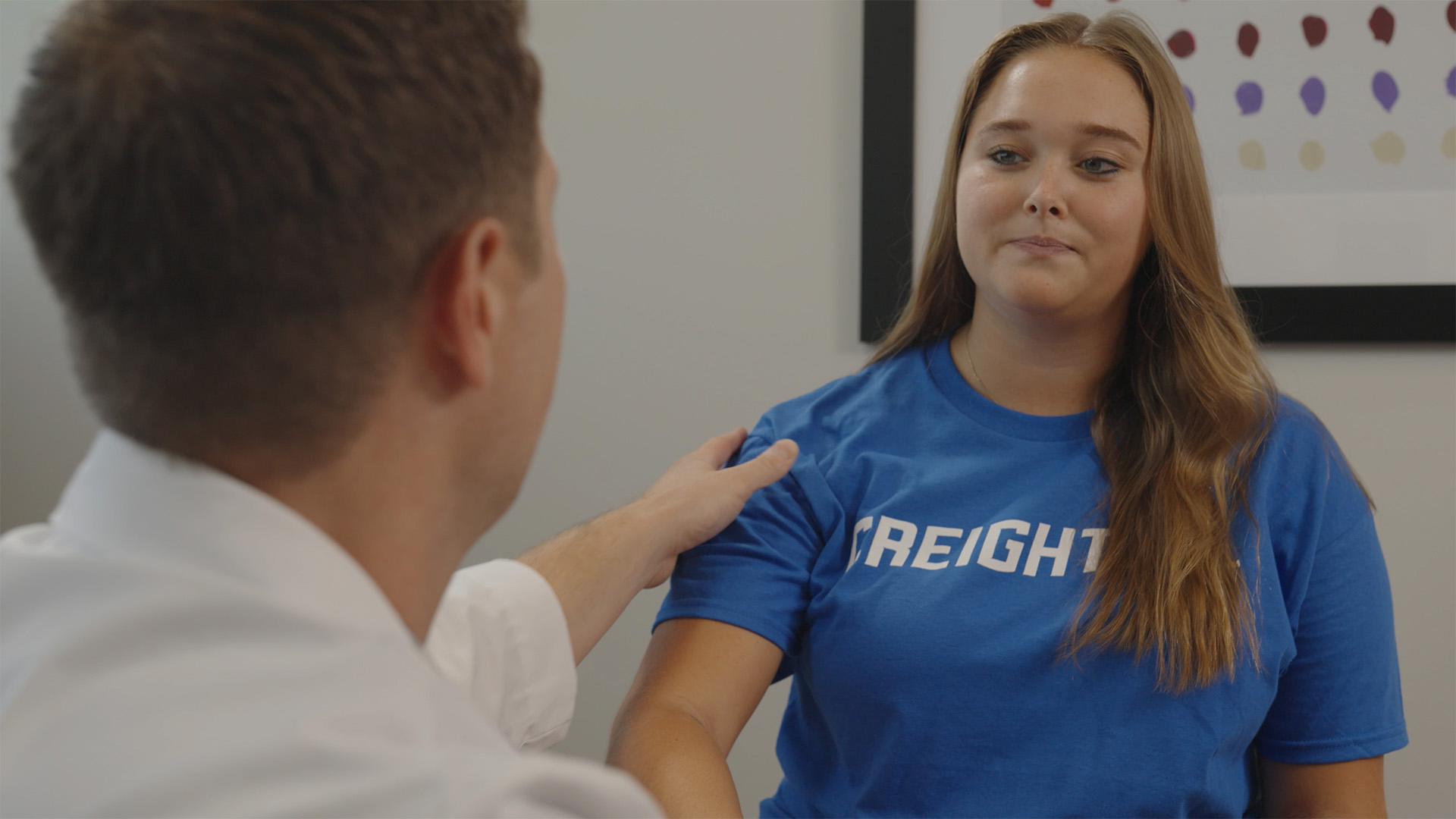Shoulder Resurfacing
Shoulder resurfacing is a less invasive alternative to a total shoulder replacement for patients who may have arthritis affecting only one portion of the joint. Shoulder resurfacing is a type of shoulder arthroplasty that involves placing an implant cap on top of the surface of the humerus bone, creating a smooth, covered surface without the need to remove the entire humeral head of the bone. More of the patient’s bone is preserved with this procedure, which means patients can benefit from a quicker recovery.

Why is my doctor recommending a Shoulder Resurfacing?
The Omaha Shoulder & Elbow Orthopedic Specialists at MD West ONE can properly recommend if a Shoulder Resurfacing is the best course of action based on your symptoms and situation. If you have the following symptoms, you may want to make an appointment with one of our Board Certified Specialists.
- Chronic mild to moderate shoulder joint pain
Advantages of a Shoulder Resurfacing
Shoulder resurfacing, as opposed to shoulder replacement surgery, is not as invasive a procedure, which means it requires less downtime for recovery, as well as provides for a more comfortable physical therapy process. Good candidates for the procedure include anyone who is suffering from chronic mild to moderate shoulder joint pain who does not need a total shoulder joint replacement.
Highly experienced orthopedic surgeons recommend shoulder resurfacing as a more conservative procedure when patients have arthritis or mild rotator cuff injuries or disease.
What to Expect
Experience matters when it comes to choosing the right shoulder surgeon for your shoulder pain, whether for a conventional total shoulder replacement or simply for humeral head resurfacing treatment. Future surgeries are still possible after shoulder resurfacing, but the downtime and recovery benefits of this less invasive approach allow many people to get back to their pain-free normal lives quickly. Learn if you are a good candidate for this shoulder arthritis treatment by calling our office today!
After Surgery
Shoulder resurfacing is typically performed under general anesthesia and patients may require a short hospital stay. In certain cases, the patient may be able to go home the same day. The treated arm will be immobilized in a sling for up to six weeks, however, simple activities such as showering, eating, writing, and typing should be possible shortly after the procedure. Some pain, discomfort, and limited mobility should be expected for a few weeks after surgery. Patients can expect to experience improved mobility and maneuverability in the shoulder a few months after the procedure.
Participation in physical therapy is important to help strengthen and restore the shoulder’s mobility quickly and healthily. Our practice recommends a rehab program that encourages patients to perform specific exercises the first day after surgery and start more comprehensive physical therapy within a week of their operation. Implementing a rehab protocol enables patients to return more quickly to their daily activities.
Risks and Complications
Shoulder Resurfacing is a relatively safe procedure. Being minimally invasive it is associated with fewer risks and a quicker recovery. However, all surgeries do come with risks or potential complications. Some of the potential risks associated include:
- pain
- infection
- injury to nerves and blood vessels
- continued instability
- the need for additional surgeries
Don't wait any longer to get relief. Make an appointment to see one of our orthopedic specialists.
Meet MD West ONE's orthopedic specialists and learn more about how they can help and if a Shoulder Resurfacing is right for you

David C. Buck, MD
Sports Medicine & Total Joint

George Emodi, M.D.
Sports Medicine & Total Joint

Brett W. Fischer, MD
Sports Medicine & Total Joint

Mark Franco, M.D.
Sports Medicine & Total Joint

Daniel L. Gaffney, MD
Hand & Wrist Specialist

Kayvon Izadi, MD
Hand & Wrist Specialist

Darren Keiser, M.D.
Sports Medicine & Total Joint

John "Jack" A. McCarthy, MD
Hand & Wrist Specialist

Mark Pitner, MD
Sports Medicine & Total Joint

Charles E. Rosipal, MD
Shoulder & Elbow Specialist

Jeffrey J. Tiedeman, MD
Hand & Wrist Specialist

Kimberly A. Turman, MD
Sports Medicine
